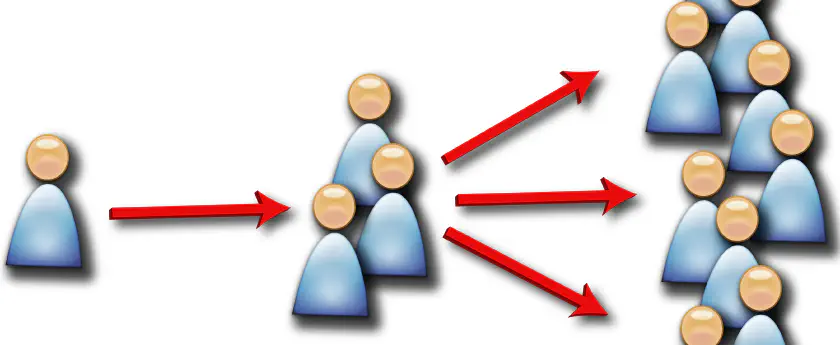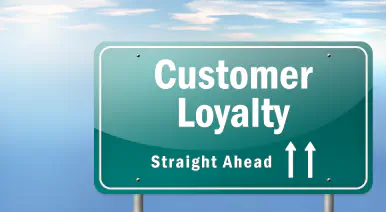The Winning Business-Employee-Customer Link
In recent years, many in the academic and popular business press have grabbed hold of a very impactful business-employee-customer connection: positive work attitudes and greater commitment and loyalty among employees all feed directly into greater customer satisfaction and loyalty. Why? There are several important reasons.
First, when top management advocates the importance of focusing on customer needs and wants, it will be the committed loyal employees (as opposed to indifferent or negative employees) who embrace this vision, take up the customer charge, and actually make it happen.
Second, person-to-person relationships are at the heart of business, especially in service industries, B-to-B settings, and contexts involving ongoing personal selling and customer service. Turnover in the employee base will disrupt and destabilize these relationships, whereas retaining critical contact employees will work to preserve the relationships.
Next is the notion of organizational knowledge. To truly serve customers, their stated and unstated needs and wants must be understood. More and more, this understanding is at the individual customer level (1-to-1). But every time employees exit the organization, some of that vital customer understanding is lost.
So it is clear from these dynamics that business success resulting from quality customer experiences and reactions depends on employee commitment and loyalty to the organization.
One of the factors operating here is that committed loyal employees are known to go “above and beyond the call of duty.” If customer delight and customer loyalty hinge on having excellent or even surprisingly over-the-top experiences, doesn’t it make sense that employees primarily bent on going the extra mile will produce this kind of experience?
And, what an incredibly powerful additional rationale for HR managers to build employee commitment and loyalty! Not only will employee commitment and loyalty be good for all the traditional HR reasons (retention, reduced replacement costs, increased productivity, increased organizational knowledge, etc.), but the more vital ultimate downstream effect is that it will feed and fertilize the vitality and health of the customer base – the direct source of revenue and profit for the company.
All of the previous lines of reasoning are especially relevant for customer-contact employees. They are the face of the company to the customer. A positive, enthusiastically committed, loyal employee will put forth the best personification and representation of the company. If, however, these frontline employees are discouraged, de-motivated, feeling trapped, mistreated, angry, or even just indifferent, what kind of ambassadors will they be? Is it really reasonable to assume customers will have the best possible experience and get the best possible service from such uncommitted, disloyal, and disgruntled employees? And, if customers are not served well, customer dissatisfaction, disloyalty, and defection are likely consequences.
An important qualification should be raised here. We are not just advocating simple employee retention. It is well known that some employees stay with a company because they have no other viable options, or they feel they owe the company or certain people in the company, or they feel locked in with the proverbial “golden handcuffs.” But let’s face it: some of those employees, while retained, are organizational dead weight. They are warm bodies that have shown up for the last 10 years, but are average or minimal performers at best. They are not staying with the company because they want to, they are staying because they feel they have to. There is a huge difference. In fact, employees sticking around because they have to (technically called continuance commitment), may give lackluster customer service, or even worse, “bad-mouth” the organization to customers.
So, the kind of commitment and loyalty we are talking about here is based on a true desire to stay, an almost feeling-based attachment or bond to the company (technically called affective commitment). When employees stick around as a natural manifestation of that kind of attitude, then it is likely that customers will be served in all the previously described ways that build customer satisfaction and loyalty. It just makes sense. Strong commitment to the organization motivates employees to work hard and to perform and behave in ways that are highly meaningful and helpful to customers. And, the manifestation of these customer-enhancing behaviors by loyal employees will be especially strong when an organization has an explicit, internally well-communicated strategic focus on serving customers.
One of the key takeaway implications of these concepts for organizations is the need to simultaneously leverage the power of employee and customer information. It is time to break down organizational barriers between isolated and disconnected departments, data sources, research efforts, and continuous improvement planning/initiatives that exist in separated organizational silos. The employee-customer system should be managed as a unified whole to strategically leverage the linked information. That goal needs to influence the way customer and employee research is designed, analyzed, interpreted, and acted upon. While there are obvious methodological, organizational, and operational challenges here, the payoff for doing so is also obvious: an organization strategically managing the employee-customer-profitability chain to help achieve sustainable enhanced business success – all built on the solid interconnected base of loyal employees and customers.




























 By submitting this form you agree to our
By submitting this form you agree to our